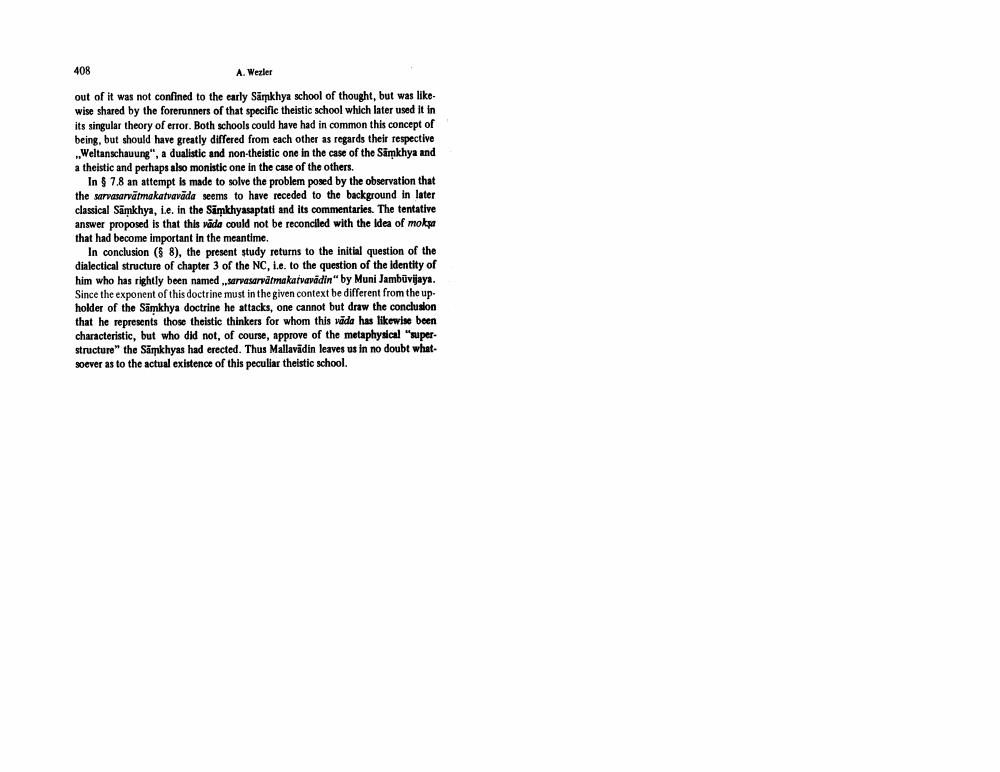________________ 408 A. Wezler out of it was not confined to the early Samkhya school of thought, but was likewise shared by the forerunners of that specific theistic school which later used it in its singular theory of error. Both schools could have had in common this concept of being, but should have greatly differed from each other as regards their respective ,,Weltanschauung", a dualistic and non-theistic one in the case of the Samkhya and a theistic and perhaps also monistic one in the case of the others. In $ 7.8 an attempt is made to solve the problem posed by the observation that the sarvasarvatmakatvavada seems to have receded to the background in later classical Samkhya, i.e. in the Samkhyasaptati and its commentaries. The tentative answer proposed is that this vada could not be reconciled with the idea of moksa that had become important in the meantime. In conclusion (SS 8), the present study returns to the initial question of the dialectical structure of chapter 3 of the NC, i.e. to the question of the i him who has rightly been named , sarvasarvatmakatvavadin" by Muni Jambuvijaya. Since the exponent of this doctrine must in the given context be different from the upholder of the Samkhya doctrine he attacks, one cannot but draw the conclusion that he represents those theistic thinkers for whom this vada has likewise been characteristic, but who did not, of course, approve of the metaphysical "superstructure" the Samkhyas had erected. Thus Mallavadin leaves us in no doubt whatsoever as to the actual existence of this peculiar theistic school.




